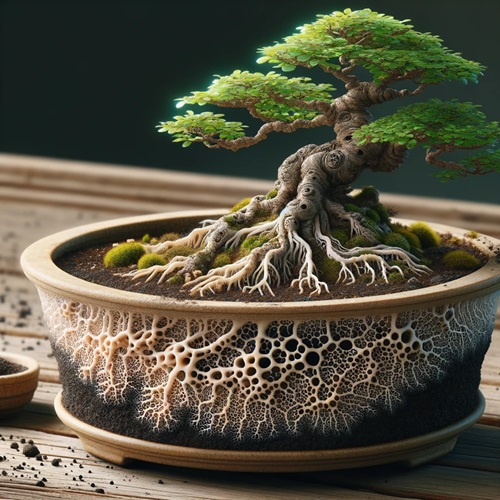8 - Conclusion

The study of mycorrhizae in the context of bonsais reveals a fascinating facet of these miniature trees. Beyond their captivating aesthetics, bonsais are the stage for a complex and essential biological interaction crucial for their survival and prosperity. Mycorrhizae, acting as invisible but powerful partners, play a crucial role in the nutrition, health, and resistance of bonsais.
The different types of mycorrhizae, whether arbuscular or ectomycorrhizae, offer unique benefits in terms of nutrient absorption, disease resistance, and stress management. Their role in improving soil structure and root health is also invaluable, especially in the controlled environment of bonsai pots.
For cultivators, understanding the functioning of mycorrhizae, establishing and maintaining this symbiosis, and managing potential problems are fundamental aspects of bonsai cultivation. The practical tips and examples provided in this article aim to help cultivators optimize this symbiotic relationship for the well-being of their trees.
In conclusion, mycorrhizae are not just a biological curiosity but an essential element of a bonsai's ecosystem. By paying attention to this underground relationship, bonsai cultivators can not only improve the health and growth of their trees but also deepen their connection with the ancient and delicate art of bonsai.

















